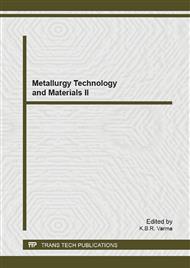p.120
p.124
p.129
p.132
p.136
p.144
p.148
p.153
p.157
Effect of Controlling Process Parameters on Shrinkage Porosity in Aluminum Die-Casting Rotor
Abstract:
Aluminum rotor prone to have many casting defects especially large amount of gas and shrinkage porosity, which caused eccentricity, loss and noise during motor operation. Many attempts have been made to develop methods of shrinkage porosity control, but still there are some problems to solve. In this research, the process of vacuum squeeze die casting is proposed for limitation of defects. The 6 pin point gated dies which were in capable of local squeeze at the end ring were used. Influences of filling patterns on HPDC were evaluated and the important process control parameters were high injection speed, squeeze length, venting and process conditions. By using local squeeze and vacuum during filling and solidification, air and shrinkage porosity were significantly reduced and the feeding efficiency at the upper end ring was improved 10%. As a result of controlling the defects, the dynamometer test showed improved motor efficiency by more than 4%.
Info:
Periodical:
Pages:
136-143
Citation:
Online since:
September 2013
Authors:
Keywords:
Price:
Сopyright:
© 2013 Trans Tech Publications Ltd. All Rights Reserved
Share:
Citation:


